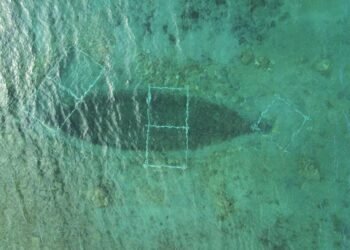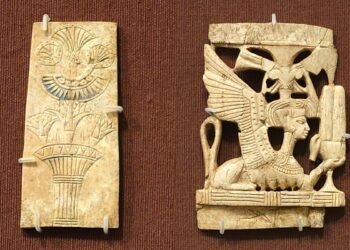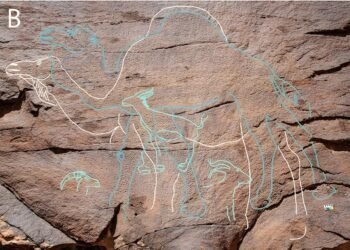Archaeologists have unearthed a stunningly well-preserved Roman villa in the city of Tripolis near Denizli in western Turkey. The discovery includes rich frescoes and a rare decorative fish pond, hinting at the luxurious lifestyles of the city’s elite nearly 1,600 years ago.

Led by Professor Bahadır Duman from Pamukkale University’s Archaeology Department, the excavation has been ongoing for 13 years as part of the “Heritage for the Future” project by the Ministry of Culture and Tourism. Tripolis, situated near the Büyük Menderes River, is considered one of the best-preserved ancient cities of western Anatolia.
The newly unearthed villa is about 1,500 square meters in size and contains four rooms, two large halls, a cistern, two fountains, a 20-meter-long colonnaded gallery, and a 40-square-meter marble fish pond. According to Duman, this building is larger than regular residential houses, and the ornaments on the walls make it distinct.
The walls of the villa are entirely adorned with frescoes in yellow, blue, red, and brown. The frescoes are botanical and architectural in theme and provide insight into Roman art traditions. Nevertheless, it is the fish pond that truly sets this discovery apart.

Archaeologists believe that the pond was used to raise fish that were served fresh at gatherings, a rare feature in Roman Anatolia.
The fact that there are marine shells near the structure supports this theory, suggesting that the owner of the villa probably utilized the pond both as a source of food and as a status symbol. Although Roman coastal cities had similar features, the existence of such an installation inland implies the sophistication and wealth of the people of Tripolis.
Previous excavations at Tripolis have already revealed a 1,500-year-old church, a 2,000-year-old mosaic-covered villa, and Roman grain depots, workshops, and public buildings. The new villa find adds to this bounty of history.
For additional images and more information about this discovery, see the coverage by Türkiye Today.























Very very intriguing site, and we only hear about it now? I love the above photo and side view shot with Tuscan type Capital columns arcade with arched open looks like cellars or storage for food behind or possibly just side rooms…but intrigues me as much as the frescoes and fish pond. I wish there were more photos, close up of frescoes head on, and showing fish images next to pond. None of that is reflected, even at Turkey Today website photos. That all said, thanks to Turkish tourism, preservation & government for their foresite in understanding the need to learn from, extract history, and preserve it for many generations to appreciate in future and hopefully even more Tripoli site wonders will appear also. Thanks for sharing. Glad I found this site and Turkey Today sites. Keep up the great archeological work & interpretation for us.
Thank you so much for your comment, Daniel.
Unfortunately, unlike some other countries, many of the photos related to archaeological discoveries and excavations in Türkiye are published exclusively by news agencies. As a non-profit magazine committed to respecting copyright laws, we are often unable to use or republish those images. We sincerely hope that in the near future, the Turkish government will consider developing a system that makes scientific images and research updates more openly accessible to all media outlets and educational platforms worldwide.